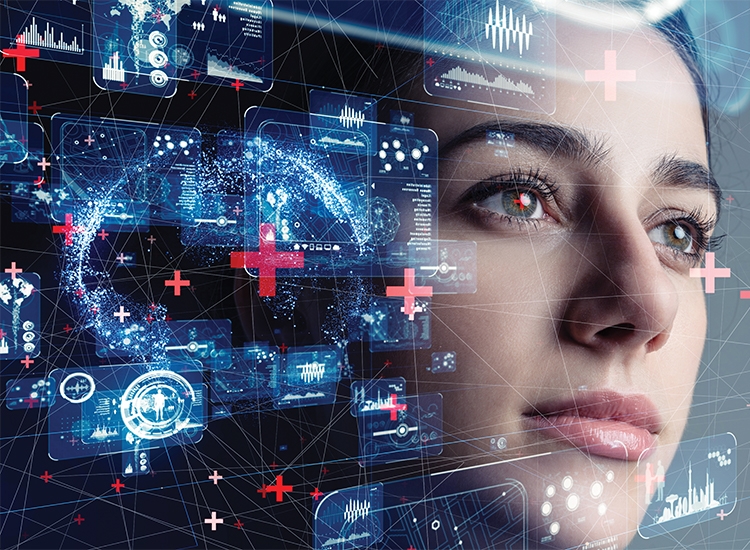Internet of things & Interoperability in security
Looking ahead in 2022, we’ve chosen to put aside COVID-19 and Brexit and focus on some ideas and technologies that could shape the year ahead.
Even though almost $1tn is expected to be spent on the Internet of Things (IoT) in 2022, to many people IoT is still about asking Alexa to play Fleetwood Mac on Spotify, or turning on the kitchen lights with your smartphone. But savvy business owners and decision makers are realising that IoT technology enables real-time insights and the flexibility to respond to challenges remotely, and saves money at the same time.
In the access control and security industry, the uptake of IoT has led to innovations and technological advancements, including energy-efficient buildings and real-time analytics to help security managers to identify weak spots.
More customers are also insisting on unified offerings. They demand interoperability, wanting a seamless integration between products, and the ability to control these using a single platform or interface.
Continued growth in Building Management Systems
Unified platforms that incorporate Building Management System (BMS) functionality allow sites to reduce installation costs and lead to comparatively low maintenance costs due to the interoperability of the system. Many companies also make huge savings in operational costs by reducing energy consumption through monitoring and optimising use.
Previously, BMS integrations were only cost- effective for large buildings and often took over four years to see a ROI. IoT means any location, from factories and warehouses to smaller industrial and commercial buildings, can now use smart systems, and thanks to associated cost savings it’s possible to achieve ROI for installation in under 12 months.
Cost savings are an extraordinarily strong incentive, but the interoperability of IoT devices and other platforms means businesses can now have a virtually controlled workplace which also allows them to secure, monitor, and control access to their premises.
Improving business outcomes with AI
The uptake of IoT means a huge growth in available data from access control and security systems. So much data that it is regularly deleted without analysis. Advances in technology mean that by teaming IoT with AI and machine learning, it is now possible to process the data at speed and receive recommendations, or even take actions automatically, based on the findings.
The IoT Alliance NZ (the industry body from where global manufacturer ICT has its headquarters) estimates that by 2023, one third of companies using IoT will be doing this in conjunction with AI. This allows businesses to turn real-time data into actionable information such as heat maps to see what areas in buildings are underused, to help with reconfiguration, or to provide tenants with high footfall locations for more effective signage.
AI is also becoming more commonplace in video surveillance. Machine learning is already leading to a reduction in false alarms and improved monitoring accuracy as systems learn to ignore triggers such as moving trees or animals. Any decrease in false alarms frees up time for security staff to focus on real emergencies.
Interoperability using custom integration tools
As well as IoT devices, communication between other platforms or services is becoming increasingly important. A fitting example is custom integration tools like APIs (Application Programming Interfaces) for syncing data, or SDKs (Software Development Kits) which can help integrate multiple disparate systems into one cohesive solution. In the security industry this could mean controlling user access based on data in an external system, sending temperature and humidity readings to a Building Management System, or the addition of mobile credentials or other functionality into a third-party app.
Increasing adoption of biometrics and mobile credentials
Advances in card technologies and the addition of 2FA (two-factor authentication) have led improved access solutions, but more customers are also turning to biometric access control using IoT, as biometric credentials are permanent and unique to each user.
Pairing AI with an IoT biometric facial recognition camera can be used to enhance a standard security solution, by automatically identifying and authenticating individuals regardless of changes in appearance, such as clothing, hair colour, facial hair, or even aging.
People are comfortable with this technology as they have used fingerprints or face recognition to unlock mobile phones for many years now. Smartphones are another technology which highlights the interoperability available in security and access control.
The adoption of mobile credentials will also continue to grow as more customers understand the convenience associated with combining access control with a device that you always have on you. The recent introduction of mobile credentials to the Apple wallet will only bring this technology further into the mainstream.
New security challenges
With rising demand for IoT solutions, concerns about the security around some of these devices are increasing. Any failings could amplify the concerns and ethical issues that are present with some AI and biometrics technology. According to NEC Trends in IoT, we need to ensure we are developing a secure ecosystem which people can trust.
While 2022 is sure to bring more surprises and challenges, you can be sure that technologies like IoT and the increasing interoperability between devices and ecosystems mean the security industry has an increasingly digital and connected future.
Jon Jorundsson
Director of Sales (EMEA) ICT


